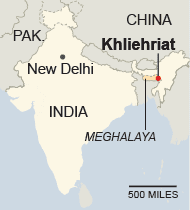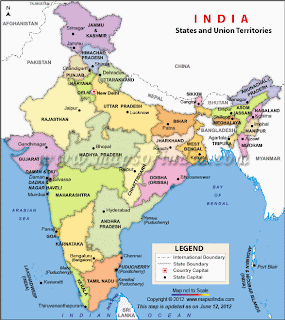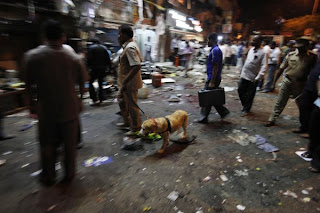Works Cited:
India
Friday, April 19, 2013
Prognosis
Prognosis:
If India stays where it is at with the conflict it is currently going through, things could be bad for India down the road. The troubled economy is definitely not good, leaving so many people poor and living in the slums. This would then cause more of the child labor problem that they are currently fighting because the kids would do their best to feed themselves and their families. With child labor being such a dangerous thing, it could hurt the people of India if a problem occurs and causes their education rate to decrease due to the amount of kids out working and not going to school. The problem with terrorism is about the same to ours. In some cases, if it got worse it could hurt the population and destroy cities and large places of business in India, causing the economy to struggle more. Both problems are not good at all for India but the government is starting to take control of the situation by creating laws against both acts.
Connection to Ancient India:
The problems in India are a reflection of Ancient India in a few ways. Child labor use to be very common and not a problem in older India. The people would put all children to work instead of putting them in school and there would be no problem with it. This also goes along with India's past in slavery in the early centuries BC. Another reflection is India's turmoil with control of the nation and fusion of different cultures causes many different opinions in the country. This can cause outbreaks of terrorism when people and groups disagree.
Current Situation
Current News:
India has currently been in the news for a lot of different things. One of those things is that fact that India is having a problem with child labor. Though they have laws in place saying that children ages 6 to 14 should be in school and laws banning child labor, hundreds of kids continue to work in the horrendous working conditions. The most common industrie for these children to work in is coal mining, a severely dangerous occupation. The New York Times did a report on the industry out of Khliehriat. When there, they saw the dangerous and deadly working condition for these children. The children working in the mines would be going 70 feet into these mines with no ventilation, no prevention of explosions and only one way out. Suresh, a teen working in the mine says, “How can we not work?” he asked. “We have to eat.” India is also, like the US, having a hard time with terrorism. On February 22, 2013, two bombs were placed on bikes in the city Hyderabad. It killed 16 people with 70 others injured. It was the largest bombing in India since 2011.
Key Leaders
Key Leaders:
Dr.Rajendra Prasad (1950-1962)- First President of India. He was also a freedom fighter during the Indian independence movement. Prasad was the only president to serve two terms in office
A. P. J. Abdul Kalam (2002-2007)- Kalam is a scientist who played a leading role in the development of India's ballistic missile and nuclear weapons programs. He also received the Bharat Ratna. Kalam was affectionately known as the People's President.
Pratibha Patil (2007-2012)- Patil is the first woman to become the President of India. She was also the first female Governor of Rajasthan
Pranab Mukherjee (2012~)- Mukherjee held various posts in the cabinet ministry for the Government of India such as Finance Minister, Foreign Minister,Defence Minister and Deputy Chairman of the Planning Commission.
Society
Society:
India is one of the most culturally unique places in the world. Being so large of a nation, it consists of many different religions and languages. The most spoken language is Hindi, along with many people know a few words in English. The main two religions practiced in India are Hindu and Muslim. The population is around 1,220,800,359. Unlike lots of countries, India is currently at a point where it is hard to distinguish a middle class. In certain parts of the country and cities, like places in Mumbai, and Delhi, it is focused on the most modern, state of the art technology. Areas like these are were the wealthy and technology based people live. The economy here is amazing. Other places, like Banganga and Chandmari, are slums with poor people who have nothing to their name. That’s one of the problems with India, You have the high and wealthy, and everyone else consisting of the poor and struggling.
History
History:
Considered one of the most fertile places in the world, India is now located on what used to be the Indus River Valley. Around 1500 BC Aryan tribes from the northwest came and settled in India, giving it the old and traditional ways that are still present in India. In 4th to 6th centuries BC, India went through a Golden Age brought on by the Gupta Dynasty. This was the flourishing of science, art and culture in India. Part of that culture was the spreading of Islam which moved across the country over the course of 700 Years. In the 10th and 11th centuries, Afghans and Turks took control over India, creating the Delhi Sultanate. This was a time of slavery and the spread of Muslim religion. Later in the 16th century, Emperor Babur established the Mughal Dynasty. One of the most noticeable mementos from this dynasty was the building of the Taj Mahal built by the emperor for his dead wife. By 19th century, Great Britain became in power over India due to exploration by Europeans in search of places to get cotton, tea/spices, gold and other good found in India. Tension between the civilians in India and the British lead to wars and eventually India’s fight for independance. One thing India is greatly known for is the non-violent protest during this time. In 1947, India gained its strongly fought independence. India is struggling with many things including terrorism and poverty, but is still considered a strong global power.
Subscribe to:
Posts (Atom)













